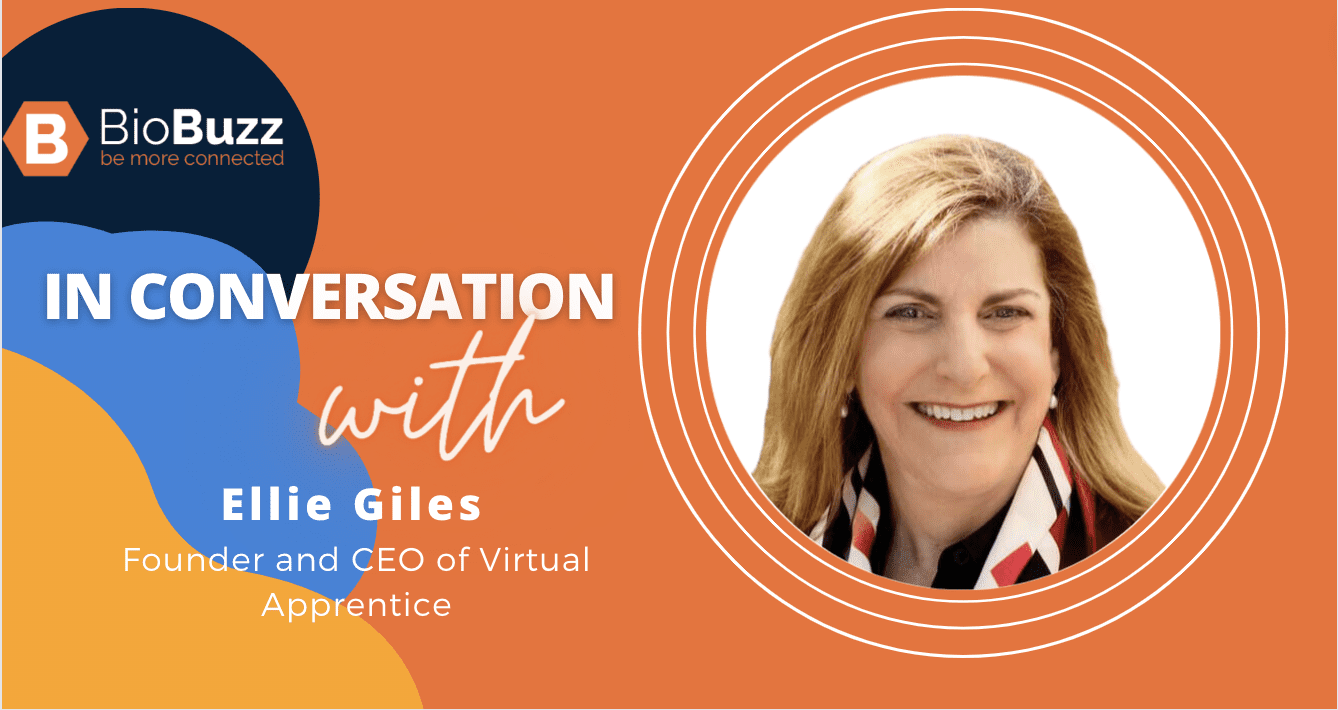
Harnessing the Power of VR to Tap Into Baltimore’s Untapped Workforce: A Deeper Dive into Dr. Ellie Giles’ Virtual Apprentice
By Ezekiel Kelley
August 15, 2023
Baltimore stands as a prime example of a city brimming with potential, teeming with an untapped workforce that remains on the cusp of the burgeoning biotech industry. But this narrative isn’t unique to Baltimore; many global hubs echo a similar tale, where a vast population awaits the right tools and training to plunge into the evolving world of biotechnology.
Virtual reality (VR) emerges as the bridge that can fill this chasm. With the innovation of Virtual Apprentice by Dr. Ellie Giles, VR transcends its entertainment bounds, positioning itself as a revolutionary tool to transition aspiring individuals into biotech seamlessly. As Dr. Giles shared, “Innovative tools like VR can unlock potentials that traditional methods might overlook.”
Bridging the Gap in Education and Training
Dr. Giles is not just a name but a beacon of dedication in the realm of education. Beginning with her heartfelt work supporting special needs children, Dr. Giles demonstrated an innate knack for understanding and catering to diverse learning needs. This hands-on approach formed the bedrock of her educational philosophy, always striving to keep learning both relevant and accessible. Reflecting on her journey, Dr. Giles shared, “For me, it has always been about addressing the individual needs of every learner.”
As she delved deeper into her career, Dr. Giles’ journey took her to notable places like Johns Hopkins University. Here, she played a pivotal role in mentoring educators, always emphasizing the importance of flexibility and adaptability in teaching methods. Beyond the traditional academic sphere, Dr. Giles’ vision for community enrichment started to take shape. She often noted, “Education is more than just textbooks and classrooms; it’s about equipping individuals with skills for the future.”
Upon venturing into the world of economic development, she keenly observed the unique challenges faced by regions such as Montgomery County. Dr. Giles quickly discerned an existing gap: there was a pool of eager individuals, yet a discernible disconnect in skill alignment with industry demands. Expressing her views on this, Dr. Giles said, “The real challenge isn’t just identifying the gap but crafting solutions that bridge it effectively.”
With her grounded insights and pragmatic approach, Dr. Giles introduced an innovative solution: weaving VR into vocational training. Her aim was straightforward yet ambitious: to equip learners with both theoretical knowledge and hands-on experience in a virtual setting. She often emphasized, “The future of training lies in how effectively we merge technology with hands-on learning.” The overarching vision was to seamlessly connect education with the job market, ensuring smoother transitions for aspiring professionals.
Virtual Apprentice: More Than Just a Tool
Virtual Apprentice is more than just a tool; it’s an experience. Dr. Giles’ comprehensive understanding of education allows the program to foster a learning environment that resonates with the tech-savvy generation. “We’ve designed Virtual Apprentice not just as a tool but as an environment where learning happens organically.”
The power of Virtual Apprentice lies in its adaptability. Its design caters to a variety of learning styles, ensuring that individuals can grasp complex concepts at their own pace. Through immersive simulations, it provides trainees with the unparalleled advantage of repetition without resource wastage. Dr. Giles pointed out, “In the real world, mistakes can be costly, both in terms of resources and time. Virtual Apprentice offers the freedom to make mistakes, learn from them, and then perfect the techniques.”
Furthermore, it bridges the gap between theoretical knowledge and practical application. Often in traditional learning environments, there’s a disconnect between what’s taught in textbooks and how it’s applied in real-world scenarios. Virtual Apprentice changes this dynamic. As Dr. Giles aptly put it, “The virtual environment is our canvas, and on it, we paint realistic scenarios that students might encounter in actual labs. It’s about bridging the ‘knowing-doing’ gap.”
In the context of biotech, this means an opportunity to immerse oneself in simulated labs, mastering techniques without the conventional pitfalls – think errors leading to cross-contamination or hefty equipment repair costs. Beyond the tactile techniques, the platform also infuses critical thinking and problem-solving scenarios, preparing students for the unpredictable nature of real lab environments. Dr. Giles mentioned in one of her talks, “It’s not just about teaching techniques; it’s about instilling a mindset that approaches problems with both caution and creativity.”
It champions the concept of “learning by doing,” sans the real-world repercussions. This hands-on approach ensures that when students transition from virtual labs to real ones, they do so with confidence, competence, and a wealth of experience under their belts. As Dr. Giles often emphasizes, “With Virtual Apprentice, we’re not just creating better students; we’re cultivating the next generation of biotech innovators.”
Collaboration with BTI and its Outcomes
In bustling hubs like Baltimore, untapped workforces remain a significant resource, awaiting the right tools and opportunities to transition into burgeoning industries like biotech. Enter the groundbreaking collaboration between the BioTechnical Institute of Maryland (BTI), led by Dr. Brandy Carter, and Dr. Giles’ Virtual Apprentice. Speaking about this collaboration, Dr. Giles stated, “Our partnership with BTI exemplifies how innovation can transform traditional training landscapes.”
The synergy resulted in a new-age educational approach. Traditional static lab sessions metamorphosed into vibrant VR experiences where trainees could virtually step into a lab and get hands-on experience. Dr. Giles observed, “VR is the closest we can get to real-life experiences without the associated risks.”
Dr. Carter shared, “After COVID, we at BTI understood the need for there to be access for students outside of an in person environment. We believe that we’re able to augment and enhance learning while creating opportunities for more potential students to gain some skills and awareness.”
The real testament to this collaboration’s success was the outcomes: a staggering 80% retention rate post-training. Dr. Giles reflected on this achievement, stating, “The numbers reveal a story of engagement, understanding, and readiness like never before.”
As cities like Baltimore present a reservoir of latent talent, innovative training avenues become imperative. Virtual Apprentice, under Dr. Giles’ guidance, is pioneering this transition. The goal isn’t merely to replace traditional training but to augment it, ensuring every individual is equipped with the tools and knowledge they need to thrive in the dynamic world of biotech. Dr. Giles sums it up by stating, “Our aim is not just to train but to prepare individuals for the future of biotech.”




